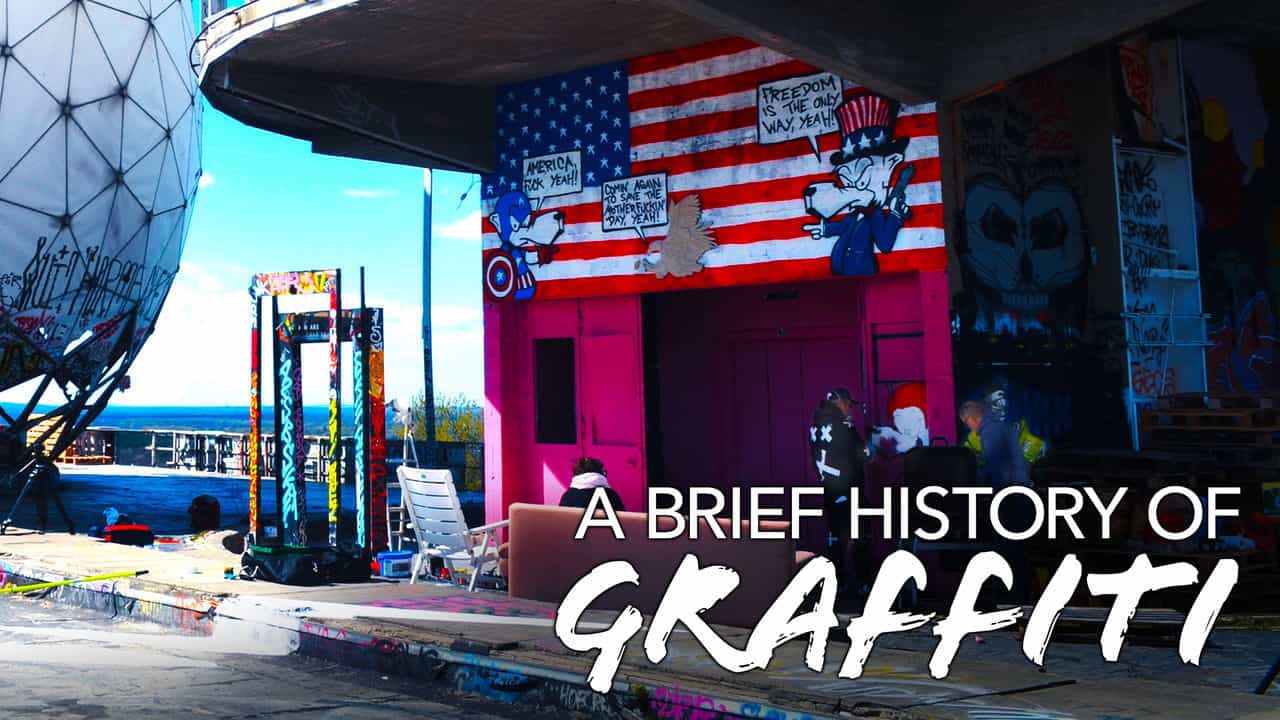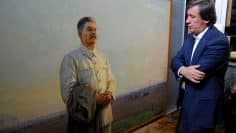A Brief History of Graffiti
A Brief History of Graffiti traces the evolution of this controversial art form from ancient times to the present day. Presented by art historian Dr. Richard Clay, it takes viewers on a journey through time and across continents to uncover the rich history of human expression through markings on walls and public spaces.
The documentary begins by examining some of the earliest known examples of graffiti, including 30,000-year-old cave paintings in Burgundy, France. Dr. Clay explores these ancient daubings, getting down on his hands and knees to closely inspect the prehistoric artwork, including a painting of a mammoth. This sets the stage for understanding how humans have long felt the urge to leave their mark on the world around them.
Moving forward in time, the film highlights various historical instances of graffiti, such as the etchings left by triumphant Red Army soldiers on the walls of the Reichstag in Berlin after World War II. These markings serve as powerful reminders of significant historical events and the human desire to commemorate them.
The documentary then shifts its focus to more contemporary forms of street art and graffiti. It features interviews with modern street artists, including French duo Lek and Sowot, who provide insights into their motivations and creative processes. These artists discuss their work in the context of urban landscapes and the challenges they face in creating their art in public spaces.
Throughout the film, Dr. Clay draws connections between ancient and modern forms of graffiti, illustrating how this art form has evolved over time while maintaining its core essence as a means of human expression. He explores the various motivations behind graffiti, from political statements and social commentary to pure artistic expression and the desire for recognition.
The documentary also touches on the legal and ethical issues surrounding graffiti. It addresses the ongoing debate about whether graffiti should be considered art or vandalism, and how different societies have approached this question throughout history. This includes discussions about the commercialization of street art and how some graffiti artists have transitioned from illegal tagging to creating commissioned works that sell for significant sums.
A Brief History of Graffiti covers a wide range of geographical locations, from the ancient caves of France to the urban centers of modern cities like Paris and Rome. This global perspective helps to illustrate how graffiti has been a universal form of human expression across cultures and time periods.
The film also explores the role of graffiti in times of social and political upheaval, such as during the Arab Spring. It discusses how street art and graffiti have been used as tools for dissent and revolution, allowing individuals to express their voices in public spaces when other forms of communication are restricted or censored.









